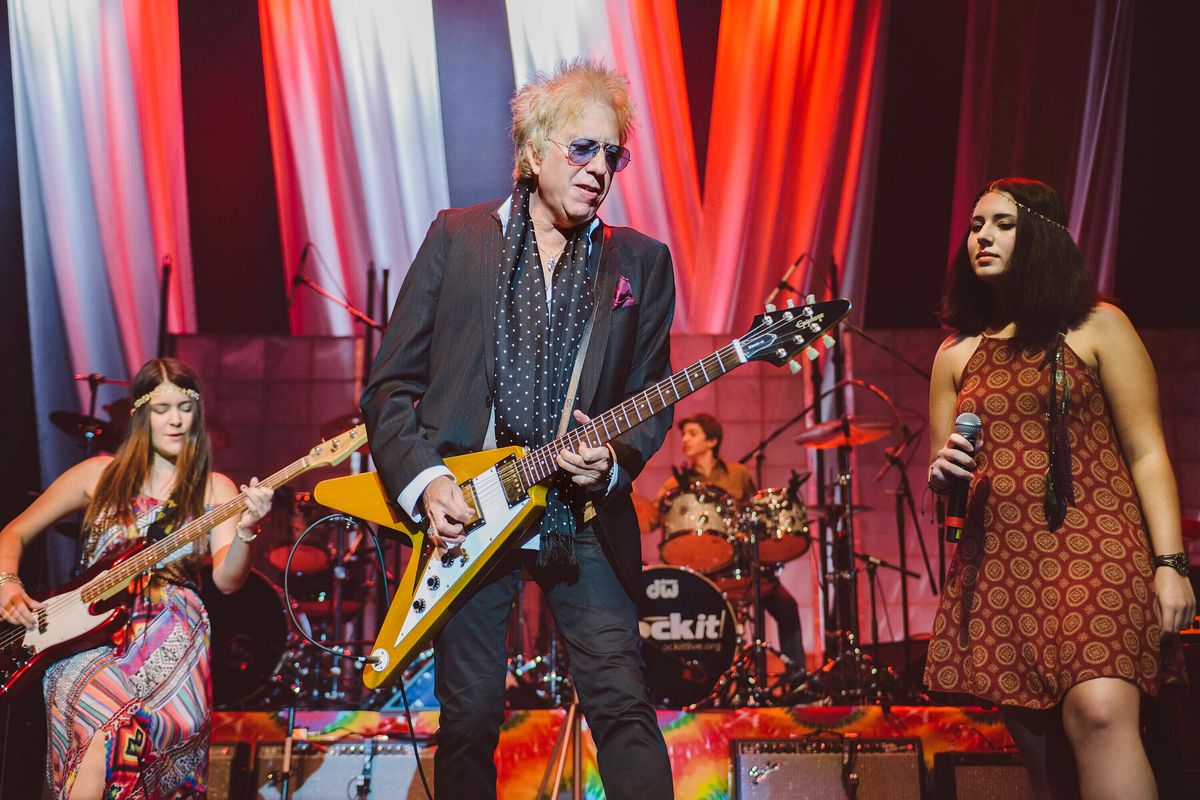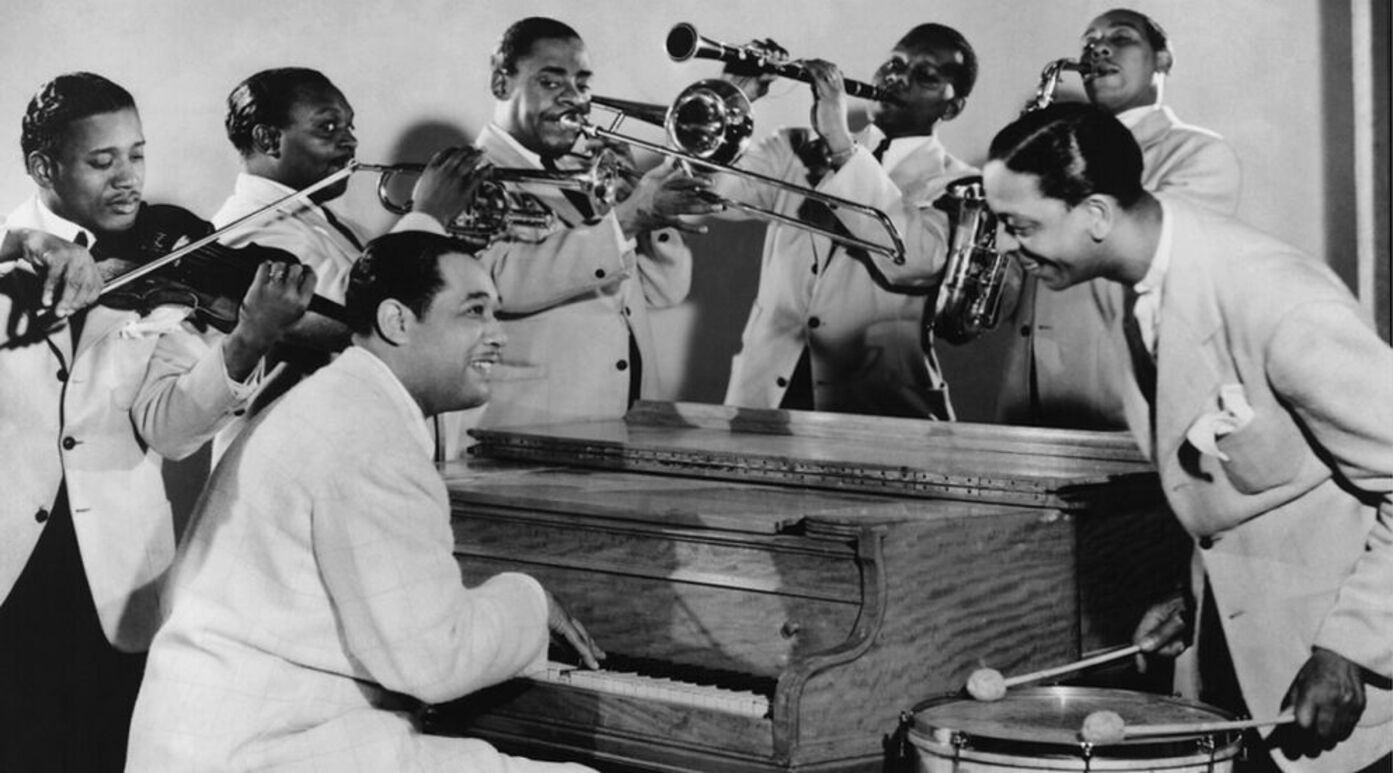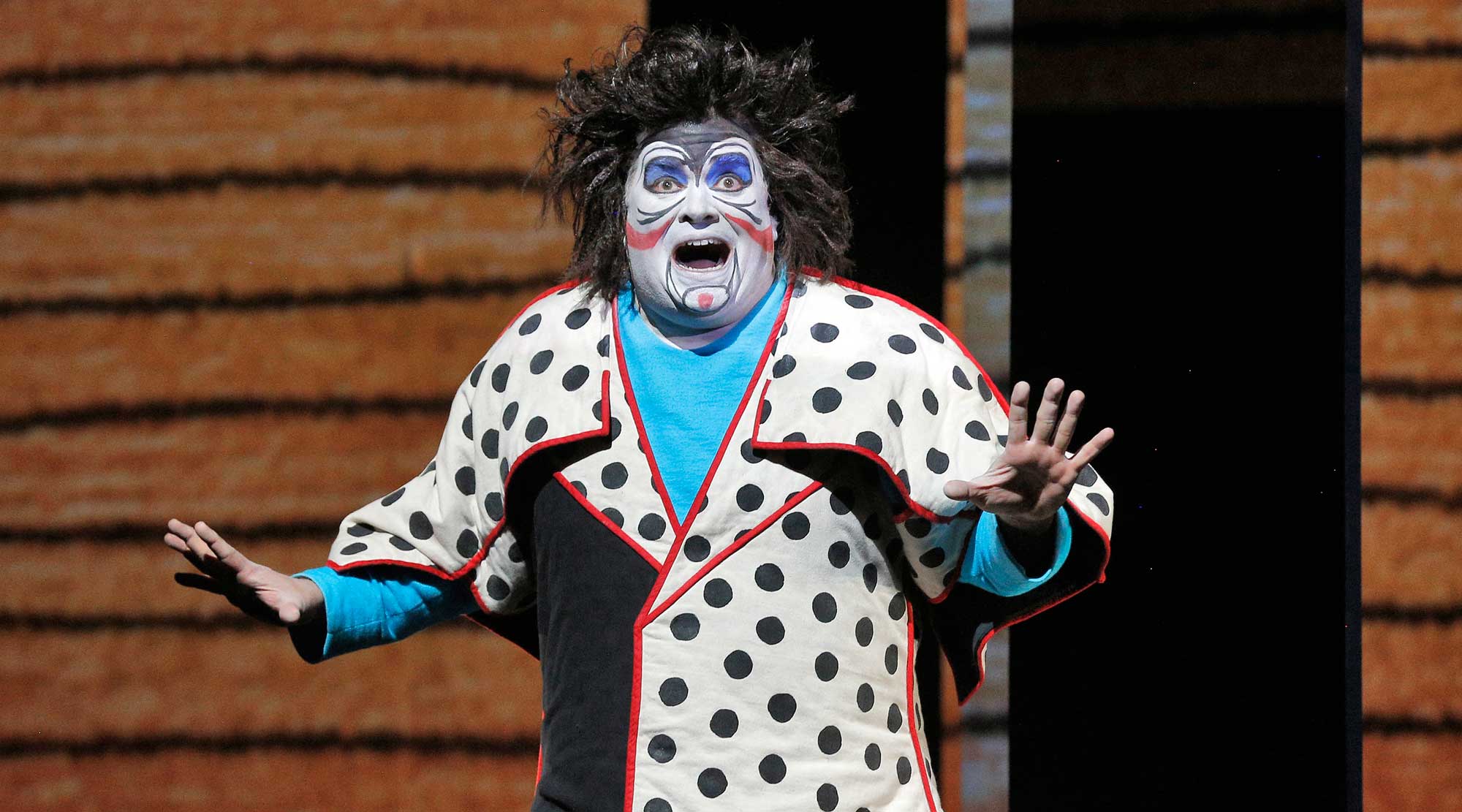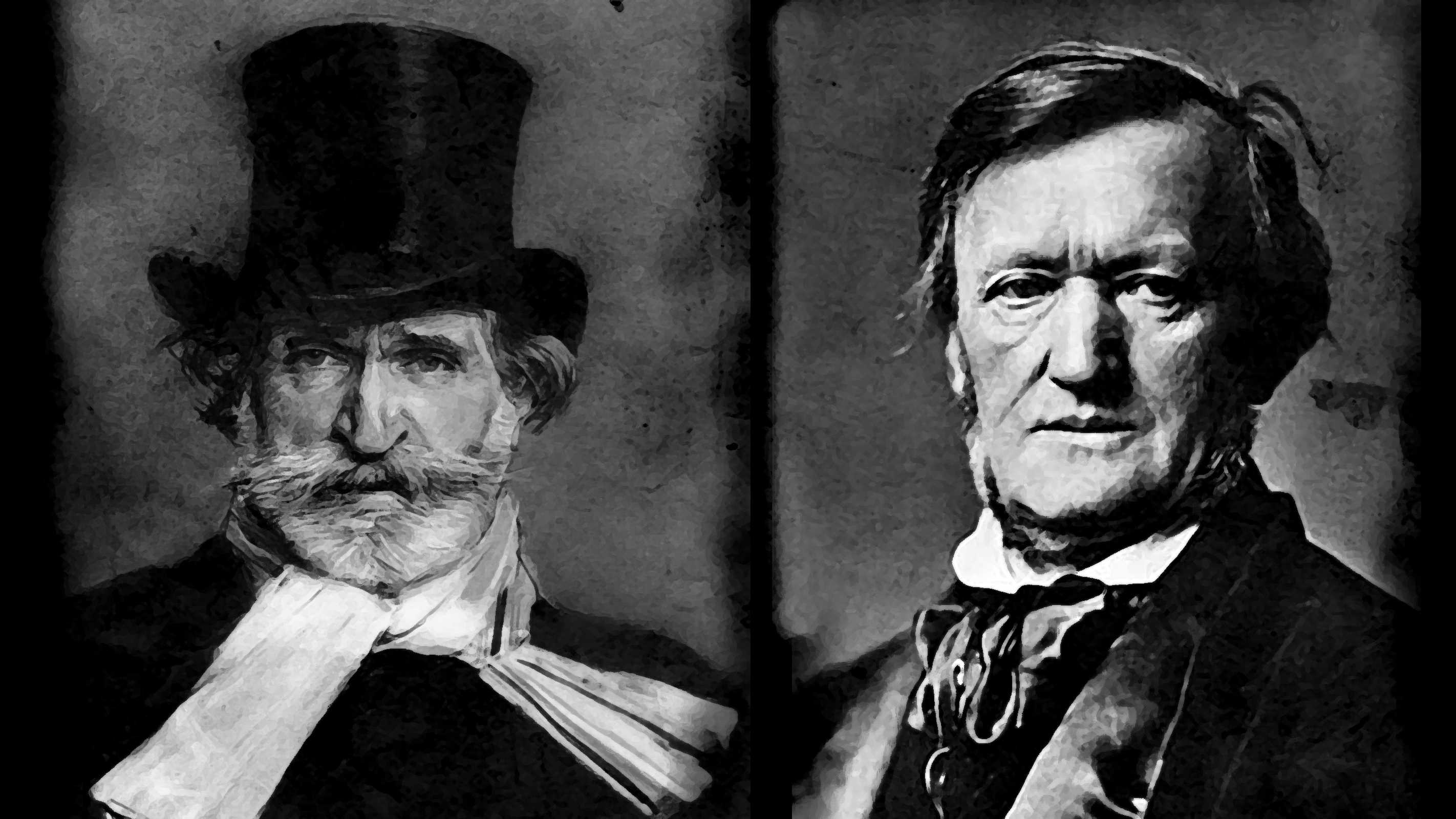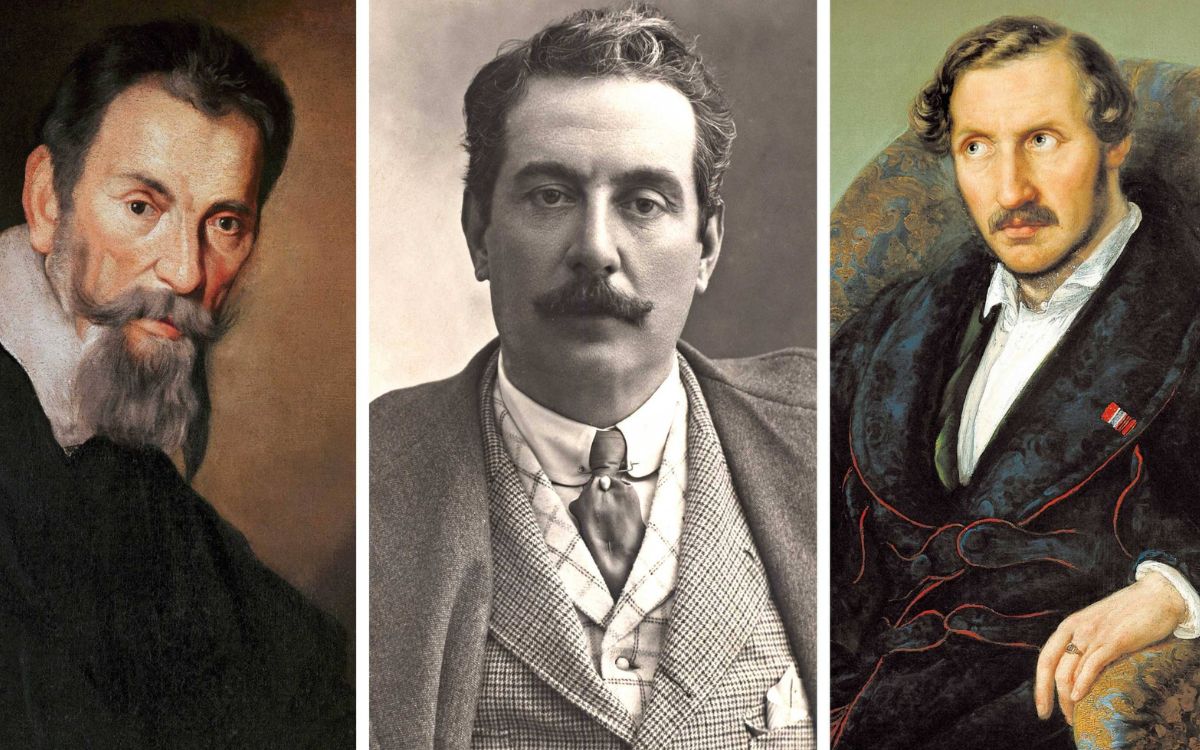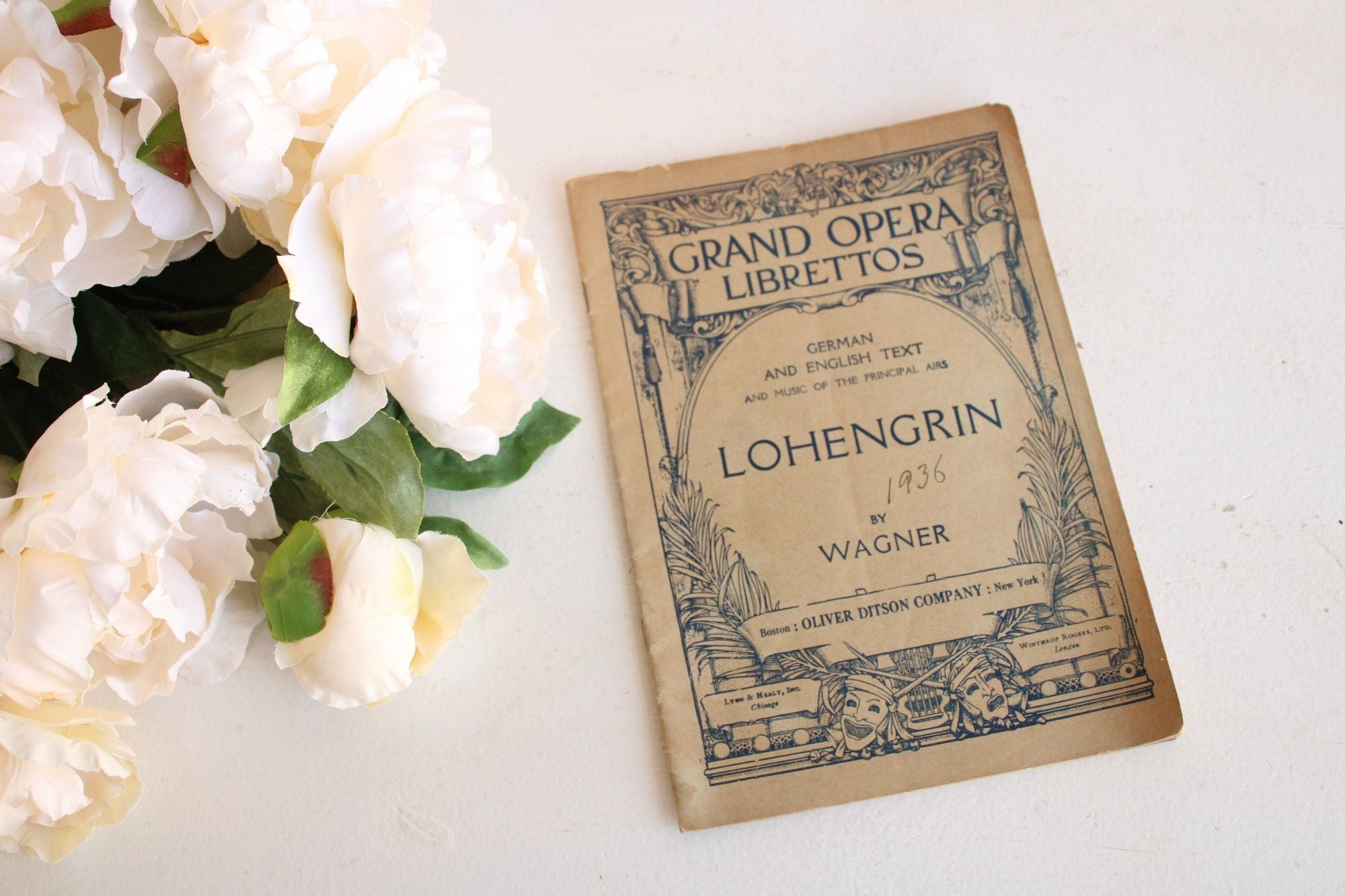Home>Events & Info>Opera>What Is The Most Popular Opera
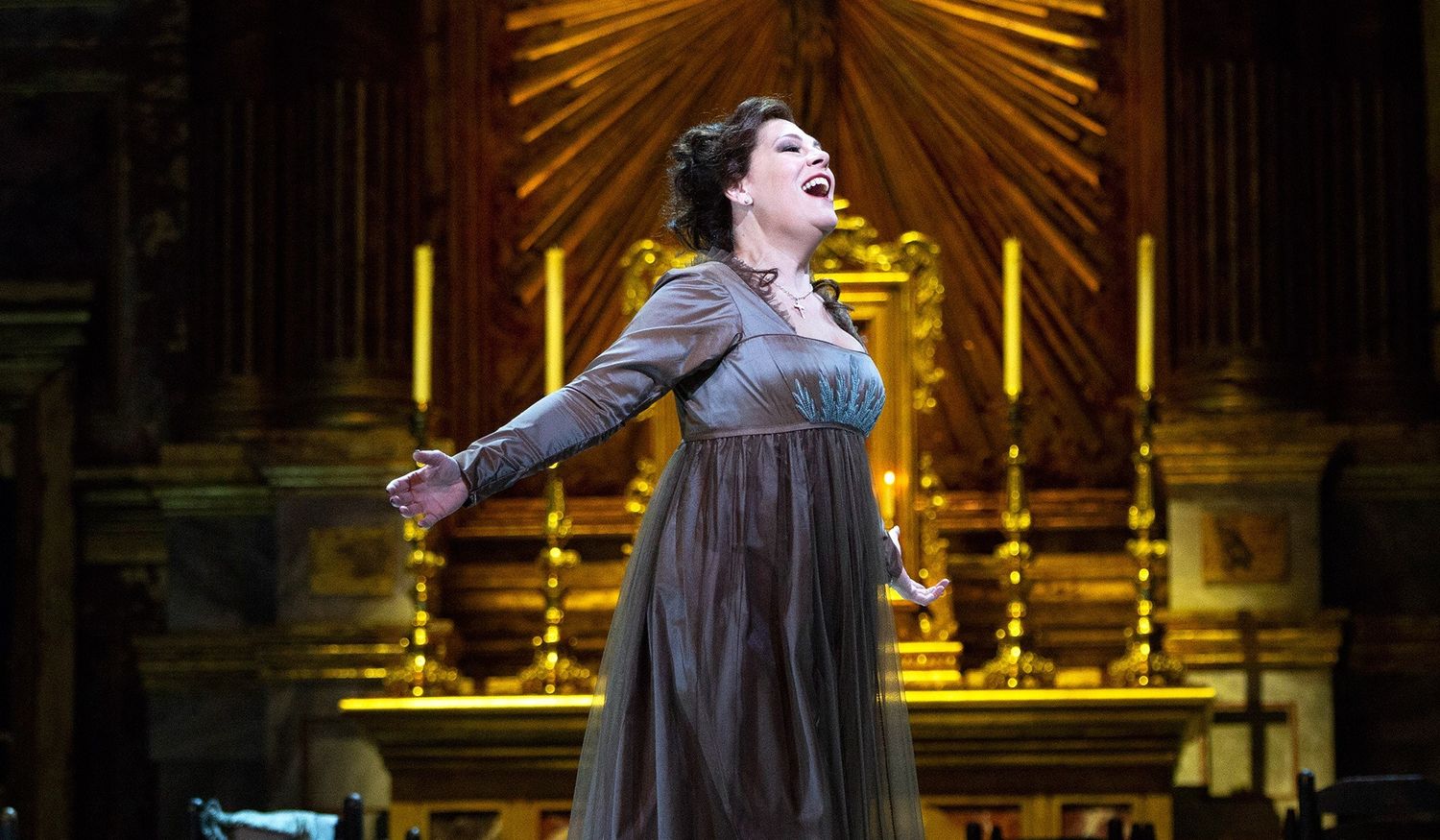

Opera
What Is The Most Popular Opera
Published: January 6, 2024
Discover the world of opera and learn what makes it so popular. Explore the history, music, and performances that make opera an enduring art form.
(Many of the links in this article redirect to a specific reviewed product. Your purchase of these products through affiliate links helps to generate commission for AudioLover.com, at no extra cost. Learn more)
Table of Contents
Introduction
Opera is an enchanting art form that combines exquisite music, captivating storytelling, and exceptional vocal performances. It is a theatrical experience that has fascinated audiences for centuries, transporting them to different worlds and stirring a wide range of emotions. From the powerful arias to the grand operatic sets, opera has an unmatched ability to captivate and move its spectators.
This article explores the world of opera and delves into the question of what is the most popular opera. Throughout history, numerous operas have achieved great acclaim and garnered a dedicated following. The popularity of these operas has been influenced by various factors, including their music, storylines, and performances.
Opera has roots dating back to the late 16th century in Italy, where it originated as a combination of music and drama. Over time, the art form spread throughout Europe and evolved into different styles and genres. Today, opera is performed in prestigious opera houses around the world, attracting both seasoned opera enthusiasts and newcomers alike.
With such a rich history and diverse repertoire, determining the most popular opera is a complex task. However, by examining historical records, ticket sales, and audience surveys, as well as considering cultural and regional preferences, we can gain insight into which operas have resonated most deeply with audiences over the years.
Whether you’re a seasoned opera aficionado or someone interested in exploring this magnificent art form for the first time, join us as we delve into the world of opera and uncover the most popular and beloved operas to date.
Historical Overview
The history of opera is a captivating journey through centuries of musical and theatrical evolution. It all began in Italy during the late Renaissance, when inventors sought to recreate the dramatic forms of ancient Greece in their music and theater. The first documented opera performance, “Dafne” by Jacopo Peri, took place in Florence in 1597, and from there, opera gained momentum.
During the Baroque period of the 17th and 18th centuries, opera flourished as a prominent art form. Composers like Claudio Monteverdi and George Frideric Handel composed operas that showcased elaborate sets, stunning costumes, and virtuosic vocal performances. These operas often revolved around mythological themes and historical events, bringing larger-than-life characters and stories to the stage.
In the following centuries, opera continued to evolve and take on new forms. The Classical period showcased the elegant compositions of Wolfgang Amadeus Mozart, who brought a refined and melodious style to the genre. Later, the Romantic period saw the rise of composers such as Giuseppe Verdi and Richard Wagner, who pushed the boundaries of opera with their ambitious and emotionally charged works.
By the 20th century, opera had diversified even further, with composers experimenting with different musical styles and thematic approaches. From the abstract and avant-garde opera of Arnold Schoenberg to the minimalist compositions of Philip Glass, opera became a platform for artistic innovation and exploration.
Throughout history, opera has served as a reflection of the social, political, and cultural context of its time. It has tackled universal themes such as love, tragedy, power, and redemption, offering audiences a profound and emotional experience.
Today, opera continues to thrive and captivate audiences worldwide. From traditional grand opera houses to innovative contemporary productions in unconventional spaces, opera remains an art form that continues to evolve and adapt while preserving its rich heritage.
Popularity Rankings
Determining the popularity of operas can be a subjective task, as tastes and preferences vary among individuals and across regions. However, certain operas have undeniably achieved remarkable popularity and have become iconic within the opera world.
One opera that consistently ranks high in terms of popularity is Giacomo Puccini’s “La Bohème.” This timeless masterpiece, first performed in 1896, tells the poignant story of love and loss in the bohemian streets of Paris. With its beautiful melodies, relatable characters, and emotionally charged plot, “La Bohème” has captured the hearts of audiences around the world. From its dazzling premiere to its frequent revivals in opera houses everywhere, this opera continues to enchant and move listeners.
Another opera that has stood the test of time is Wolfgang Amadeus Mozart’s “The Marriage of Figaro.” This comedic masterpiece, premiered in 1786, is filled with witty dialogue, intricate musical compositions, and a cast of remarkable characters. “The Marriage of Figaro” explores themes of love, power, and human foibles, and it remains a favorite among opera-goers for its charm and brilliant characterization.
Additionally, Giuseppe Verdi’s “La Traviata” is widely regarded as one of the most beloved operas of all time. Set in 19th-century Paris, this tragic love story touches on themes of sacrifice, societal expectations, and redemption. With its soaring melodies and deeply emotional moments, “La Traviata” continues to attract audiences and has become a staple of the operatic repertoire.
While these operas consistently rank high in popularity, it is important to note that rankings can vary depending on factors such as geographical location, cultural preferences, and even trends within the opera industry. Regional variations in popularity often occur, as certain operas may resonate more deeply with audiences in different countries or cities.
Opera companies and critics often conduct surveys to gauge the popularity of operas, taking into account factors such as attendance, ticket sales, and audience feedback. These rankings help shape programming decisions for opera seasons and guide the choices made by both established companies and emerging opera ensembles.
Ultimately, the popularity of an opera is a testament to its ability to connect with audiences on a profound emotional level. The enduring appeal of these beloved operas proves that their themes, music, and stories continue to resonate with generations of opera enthusiasts around the world.
Factors Influencing Popularity
The popularity of operas is influenced by a variety of factors, ranging from the intrinsic qualities of the work itself to external factors such as marketing and cultural trends. Understanding these factors can provide insights into why certain operas rise to prominence and capture the hearts of audiences.
One of the most significant factors is the music itself. A memorable and melodic score can make an opera instantly appealing. Composers like Giuseppe Verdi, Giacomo Puccini, and Wolfgang Amadeus Mozart have created timeless melodies that resonate with listeners and elevate the emotional impact of the story. Additionally, the technical prowess of the vocal performances can greatly influence a production’s popularity. Spectacular arias and breathtaking duets can leave audiences in awe and make a lasting impression.
The quality of the storytelling and the libretto also play a vital role in determining an opera’s popularity. Compelling and relatable narratives, whether based on historical events, mythology, or contemporary themes, can captivate audiences and create a powerful emotional connection. The way the story is portrayed on stage, including the set design, costumes, and staging, can further enhance the audience’s engagement and contribute to the overall success of the production.
Timing and cultural relevance are also influential factors. Some operas gain popularity due to their connection to specific historical moments or social issues. For example, “Nixon in China” by John Adams, which explores the historic meeting between Richard Nixon and Mao Zedong, gained attention and popularity for its depiction of a significant political event. Similarly, contemporary operas that address pressing societal concerns or reflect current cultural trends can resonate with audiences and generate interest.
Marketing and accessibility efforts also play a role in promoting operas and broadening their appeal. Opera companies and venues actively promote their productions through advertising, social media campaigns, and collaborations with other arts organizations. They also work toward making opera more accessible by offering discounted tickets, live streaming performances, and providing subtitles or translations to engage audiences who may be new to the art form.
Furthermore, the reputation and prestige of opera companies and performers can significantly impact an opera’s popularity. Renowned opera houses with a history of excellence often attract esteemed directors, conductors, and singers, whose participation can generate excitement and draw audiences. The caliber of the performers and the overall artistic quality of the production contribute to its success and popularity.
Ultimately, the factors influencing the popularity of an opera are complex and multifaceted. However, by considering elements such as the music, storytelling, cultural relevance, marketing efforts, and the reputation of performers and companies, we can gain a better understanding of why certain operas capture the imagination of audiences and stand the test of time.
Iconic Operas
Throughout the history of opera, certain works have achieved iconic status, resonating deeply with audiences and leaving an indelible mark on the art form. These operas, known for their enduring popularity and cultural significance, have become cornerstones of the operatic repertoire.
One such opera is Wolfgang Amadeus Mozart’s “The Magic Flute.” Premiered in 1791, this fantastical opera blends elements of fairy tale, comedy, and Masonic symbolism. With its enchanting music, memorable characters, and thought-provoking themes, “The Magic Flute” has captivated audiences for centuries. From the iconic Queen of the Night aria to the philosophical journey of the protagonist, Prince Tamino, this opera remains a beloved masterpiece.
Another iconic opera is Georges Bizet’s “Carmen.” Set in Seville, Spain, this passionate and tragic tale revolves around the captivating and independent-hearted gypsy, Carmen. With its fiery melodies, evocative Spanish influences, and complex characters, “Carmen” has become one of the most performed and well-known operas in the world. From Carmen’s seductive Habanera to the intense final confrontation, this opera continues to captivate audiences with its unforgettable music and emotional depth.
Giuseppe Verdi’s “Aida” is yet another iconic opera that has captivated audiences since its premiere in 1871. Set in ancient Egypt, this grand opera follows the forbidden love between an Ethiopian princess, Aida, and an Egyptian military commander, Radamès. Known for its stunning set designs, powerful choruses, and the unforgettable triumphal march, “Aida” is a testament to Verdi’s compositional genius and remains one of the most beloved operas in the repertoire.
An iconic opera in the realm of German Romanticism is Richard Wagner’s “Tristan und Isolde.” This opera, premiered in 1865, is a monumental work that explores themes of love, desire, and transcendence. With its lush orchestration, innovative harmonies, and the intense emotional journey of the protagonists, “Tristan und Isolde” represents a turning point in the development of opera. Wagner’s revolutionary approach to music and storytelling has solidified this opera’s status as a landmark in operatic history.
These iconic operas are just a few examples of the enduring masterpieces that have captured the hearts and imaginations of audiences worldwide. Their powerful music, compelling stories, and profound themes have made them timeless works of art that continue to be performed and cherished by opera enthusiasts, showcasing the enduring power and beauty of the operatic tradition.
Regional Variations in Opera Popularity
Opera’s popularity can vary significantly across different regions and countries, influenced by cultural, historical, and even political factors. Certain operas may resonate more deeply with audiences in specific regions, leading to variations in popularity and repertoire choices.
In Italy, the birthplace of opera, there is a strong cultural appreciation for the art form. Operas by Italian composers such as Giuseppe Verdi and Giacomo Puccini are highly revered and frequently performed. The operatic tradition is deeply ingrained in Italian society, and cities like Milan, Venice, and Rome boast renowned opera houses that attract both local and international audiences.
In German-speaking countries, operas by composers such as Richard Wagner and Wolfgang Amadeus Mozart hold great prominence. The German opera tradition places a strong emphasis on storytelling and the integration of music, drama, and staging. The works of Wagner, with their mythological themes and grandiose scope, are particularly celebrated in Germany and Austria.
In France, operas like Georges Bizet’s “Carmen” and Charles Gounod’s “Faust” have garnered immense popularity. French opera is known for its lyrical melodies, elegant dance sequences, and a focus on dramatic storytelling. Paris, with its iconic Opéra Garnier and Opéra Bastille, remains a hub for opera lovers.
In Russia, operas by composers such as Pyotr Ilyich Tchaikovsky and Modest Mussorgsky have become integral to the national identity. Russian opera is characterized by its passionate music, rich vocal traditions, and epic narratives. Works like Tchaikovsky’s “Eugene Onegin” and Mussorgsky’s “Boris Godunov” exemplify the Russian operatic tradition and continue to enjoy widespread popularity.
Regional variations in opera popularity can also be influenced by local cultural and historical contexts. For example, Spanish-speaking countries have a deep appreciation for zarzuela, a form of Spanish operetta that blends spoken dialogue with musical numbers. Operas like the zarzuela “La Verbena de la Paloma” have become iconic in Spain and Latin America.
The popularity of operas can also be influenced by political and historical factors. For instance, during the Cultural Revolution in China, Western opera was suppressed, and the revolutionary operas of Mao Zedong’s era took center stage. However, in recent years, there has been a resurgence of Western opera in China, with performances of works by composers like Giacomo Puccini and Giuseppe Verdi gaining popularity.
These regional variations in opera popularity highlight the richness and diversity of the art form. Opera’s ability to adapt and reflect different cultures and traditions allows it to resonate deeply with audiences in various parts of the world, while simultaneously maintaining its universal appeal.
Accessibility and Outreach Efforts
Opera has often been perceived as an exclusive and elitist art form, accessible only to a privileged few. However, in recent years, there has been a concerted effort within the opera community to make the art form more accessible and engage a wider audience. Through various outreach efforts, opera companies have been working to break down barriers and make opera more inclusive.
One key initiative is the expansion of accessibility features within opera performances. The inclusion of subtitles or supertitles in different languages allows audiences to follow the storyline and understand the lyrics, even if they are not fluent in the original language of the opera. This makes opera more accessible to a diverse range of audience members, including those who may be experiencing opera for the first time.
Opera companies have also embraced technology to reach a broader audience. Live streaming productions online allows people to experience opera from the comfort of their homes, reaching those who may not have access to opera houses or live performances in their local area. This virtual accessibility has opened up a world of opera to audiences around the globe.
Outreach programs targeting schools and educational institutions have been instrumental in introducing young people to opera. Opera companies collaborate with schools to provide educational resources, workshops, and opportunities for students to experience live performances. By introducing opera at a young age, these programs aim to foster a lifelong appreciation for the art form and ensure its future sustainability.
Opera companies are also recognizing the importance of diversifying their repertoire to appeal to a wider range of audiences. In addition to performing the beloved classics, they are commissioning new works that address contemporary themes and explore underrepresented voices. This approach aims to reflect the diverse experiences and perspectives of today’s audiences, making opera more relevant and relatable.
Furthermore, opera companies are actively engaging with their local communities by organizing outreach events, open rehearsals, and behind-the-scenes tours. These initiatives allow audiences to connect with opera on a personal level, demystifying the art form and creating a sense of inclusivity.
Financial accessibility is another crucial aspect being addressed by opera companies. Many organizations offer discounted tickets to students, seniors, and individuals with limited financial means. This enables a wider range of individuals to experience the magic of opera without financial barriers.
Overall, the accessibility and outreach efforts within the opera community are aimed at making opera an art form that is open to all. By breaking down barriers, embracing technology, diversifying repertoire, engaging with local communities, and providing educational opportunities, opera companies are working to ensure that opera is not only more accessible but also more relevant and meaningful to a wider audience.
Conclusion
Opera, with its powerful music, compelling storytelling, and captivating performances, continues to enchant audiences around the world. While defining the most popular opera is subjective and influenced by various factors, certain operas have undeniably achieved iconic status and widespread acclaim.
Throughout history, operas such as “La Bohème,” “The Marriage of Figaro,” “La Traviata,” and “The Magic Flute” have captured the hearts of audiences, thanks to their exceptional music, relatable stories, and emotional impact. These timeless works represent the pinnacle of the operatic art form and continue to be performed and cherished today.
Regional variations in opera popularity showcase the diversity and cultural nuances within the opera community. From the Italian love for Verdi and Puccini, the German reverence for Wagner, to the deep appreciation of zarzuela in Spanish-speaking countries, the popularity of certain operas is deeply embedded in the cultural fabric of different regions.
However, the opera community is actively working to enhance accessibility and engage wider audiences. Outreach efforts, including the use of technology, educational programs, diversification of repertoire, and community engagement, aim to make opera more inclusive and break down barriers.
As opera companies strive to make the art form more accessible, it is our hope that more people will have the opportunity to experience the enchantment and emotional power of opera. Whether through streamed performances, educational initiatives, or discounted tickets, opera is becoming increasingly available to all, fostering a greater appreciation and understanding of this magnificent art form.
In conclusion, while the question of the most popular opera may always be subjective, opera’s enduring popularity and ability to stir emotions is a testament to its timeless appeal. As opera continues to evolve, embracing new forms and engaging diverse audiences, it remains a powerful and significant art form that speaks to the human experience in profound and unforgettable ways.

